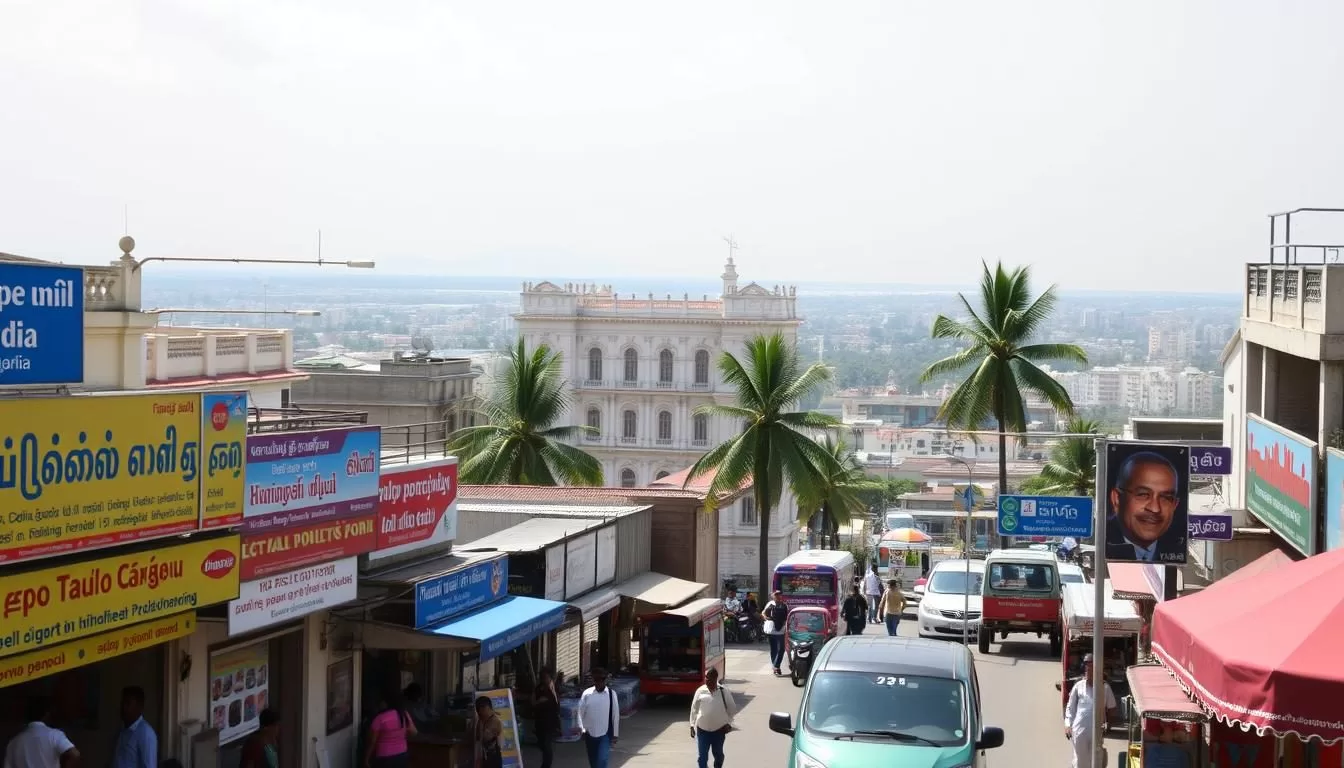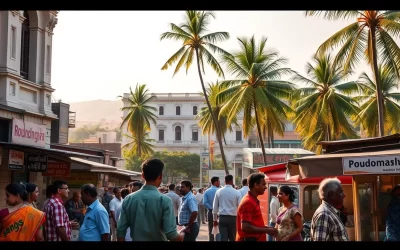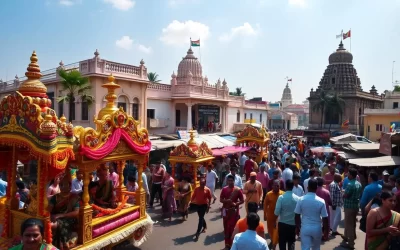You’ll discover a unique blend of cultures and languages in Puducherry, a union territory in India. As a former French colony, this territory has a rich history that is reflected in its linguistic diversity.
The territory comprises four non-contiguous districts: Puducherry, Karaikal, Mahe, and Yanam, each with its own linguistic characteristics. According to the 2011 census, Tamil is the major language spoken by 88.22% of the population.
The languages spoken in this territory include Telugu (5.96%) and Malayalam (3.84%), making it one of India‘s most linguistically diverse regions. You’ll learn how the territory’s language policy reflects its complex history and geographical distribution across different linguistic regions.
The Linguistic Landscape of Puducherry
The Union Territory of Puducherry is a fascinating mosaic of languages, thanks to its unique geographical layout. As a territory that comprises four unconnected districts spread across India’s eastern and western coasts, Puducherry’s linguistic landscape is as diverse as it is complex.
A Brief Overview of Puducherry Union Territory
Puducherry, as a union territory, consists of four small, non-contiguous districts: Puducherry, Karaikal, Yanam, and Mahé, covering a total area of 483 km². The districts are enclaves within other states – Puducherry and Karaikal are within Tamil Nadu, Yanam is in Andhra Pradesh, and Mahé is in Kerala. This unique configuration contributes to the territory’s linguistic diversity.
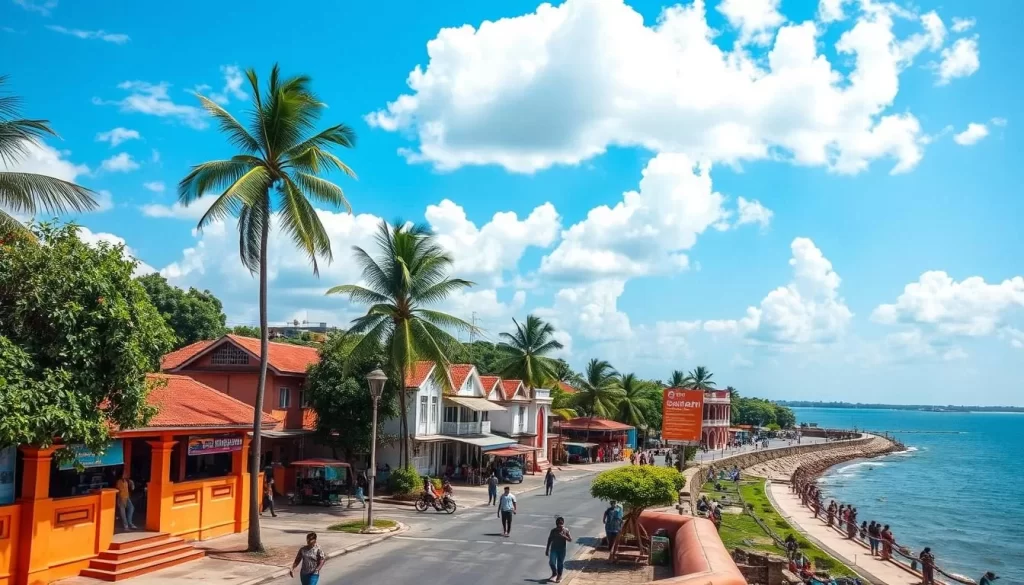
The Unique Multilingual Character of Puducherry
The geographical distribution of Puducherry’s districts has naturally fostered a multilingual environment. With a population of 1,394,467 as per the 2011 Census, the territory is predominantly Tamil-speaking (88.22%), followed by Telugu (5.96%), and Malayalam (3.84%) speakers. This diversity has led to the adoption of multiple official languages, accommodating the different linguistic communities within the territory.
The territory’s configuration has created distinct linguistic zones, making it a unique cultural and linguistic melting pot. Understanding this multilingual character is crucial to appreciating the complexities of language use in Puducherry.
Historical Background: How French and Indian Languages Coexist
As you explore Puducherry, you’ll discover how its history has created a unique linguistic environment, blending French with Indian languages. The French East India Company’s establishment of settlements in 1674 at Pondicherry (now Puducherry) marked the beginning of a nearly three-century-long French colonial rule. This period significantly influenced the linguistic landscape of the region.
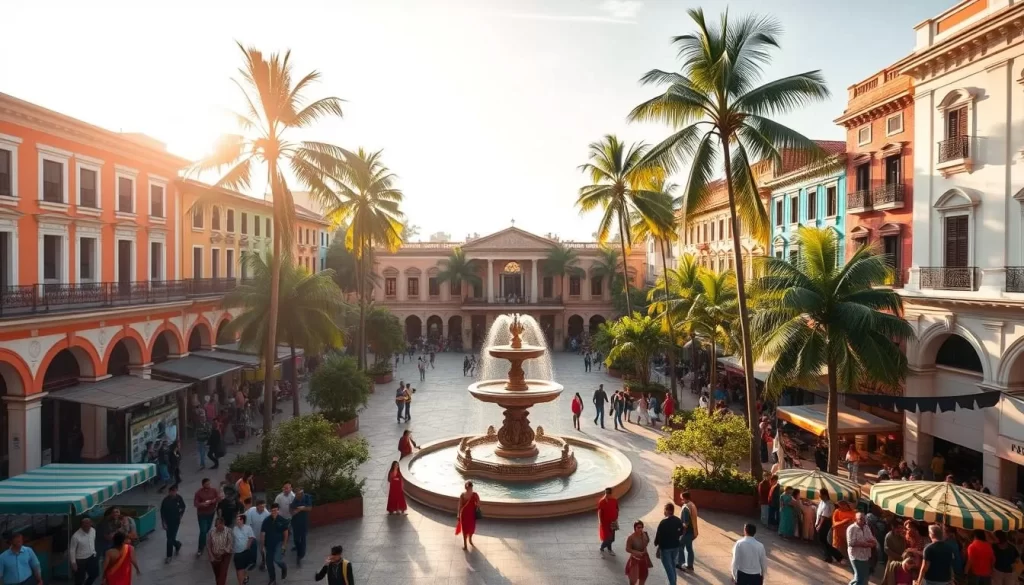
French Colonial Influence on Puducherry’s Languages
The French colonial rule in Puducherry, which lasted from 1674 to 1954, brought about a distinct cultural and linguistic identity. The establishment of settlements in Mahe (1725), Yanam (1731), and Karaikal (1739) further expanded French influence. The French promoted their language through administrative, educational, and cultural systems, creating a bilingual environment where French coexisted with local Indian languages.
The French colonial government respected both European and Indian linguistic traditions, fostering a unique multilingual character in the territory. This blend is still evident today, with many residents continuing to speak French alongside local languages.
The Transition After Independence
After India’s independence, the transition of French territories to the Indian Union was a complex process. The de facto transfer occurred on November 1, 1954, followed by the de jure transfer on May 28, 1956. The instruments of ratification were signed on August 16, 1962, formally making Pondicherry a union territory.
This transition required careful language planning by the Indian government to balance the French linguistic legacy with the need to integrate Puducherry into the broader Indian linguistic framework. The result is a territory where multiple languages coexist, reflecting its rich history and cultural diversity.
Understanding this historical context is crucial to appreciating the current linguistic landscape of Puducherry, where French, Tamil, and other local languages continue to play important roles in the daily lives of its residents.
Puducherry (UT), India: Official and widely spoken languages
The linguistic tapestry of Puducherry is woven with threads of French, Tamil, Telugu, Malayalam, and English, making it a truly unique territory. As a union territory in India, Puducherry’s language profile is shaped by its history and geography.
Legal Status of Languages in Puducherry
The legal status of languages in Puducherry is defined by a complex framework established through historical treaties and subsequent legislation. The official languages of Puducherry are French, Tamil, Telugu (in Yanam), Malayalam (in Mahe), and English. This multilingual status is a result of the territory’s unique history, including its period under French colonial rule.
You can see the complexity of language rights in Puducherry through several key legislative and treaty provisions. For instance, the Treaty of Cession in 1956 played a crucial role in determining the linguistic landscape. The treaty’s provisions ensured that the territory maintained its special administrative status, including language rights, that existed before the de facto transfer on November 1, 1954.
- The Pondicherry Official Language Act of 1965 clarified the status of official languages, establishing Tamil as the language for official purposes.
- French was maintained as an official language, as per Article XXVIII of the Treaty of Cession, which stated that “The French language shall remain the official language of the Establishments so long as the elected representatives of the people shall not decide otherwise.”
- Telugu in Yanam and Malayalam in Mahe were also recognized, accommodating the linguistic diversity of the territory.
- English was included as an official language, reflecting its importance in administration and education.
The Treaty of Cession and Language Rights
The Treaty of Cession between France and India in 1956 is a cornerstone in understanding the legal status of languages in Puducherry. Article II of the Treaty states that the Establishments will retain the benefit of the special administrative status in force prior to November 1, 1954, with any constitutional changes to be made after ascertaining the wishes of the people.
This treaty not only protected French as an official language but also paved the way for the inclusion of other languages. The subsequent Pondicherry Representative Assembly resolution in 1963 and the Union Territories Act further solidified the status of Tamil, Telugu, Malayalam, and English as official languages.
Understanding the Treaty of Cession and its implications on language rights helps you appreciate the unique linguistic diversity of Puducherry. The territory’s language profile is a living testament to its history and cultural heritage.
Tamil: The Predominant Language
As you explore the linguistic landscape of Puducherry, you’ll discover that Tamil stands out as the predominant language. With a rich history and cultural significance, Tamil is deeply ingrained in the daily lives of the territory’s inhabitants.
Distribution and Demographics of Tamil Speakers
Tamil is spoken by 88.22% of Puducherry’s population, according to the 2011 census. The language is predominantly spoken in the southern settlements of Puducherry and Karaikal, which are enclaves within the Tamil-speaking state of Tamil Nadu.
Tamil’s widespread use is a testament to its importance in the territory. The language is not only a means of communication but also a vital part of the cultural identity of the people.
Cultural and Educational Significance of Tamil
Tamil holds a revered position in Puducherry’s educational system. Most educational institutions impart education in Tamil, and students are encouraged to take Tamil as their first language.
The territory’s adoption of “Tamil Thai Valthu” (Prayer to Mother Tamil) as its anthem underscores the deep connection between the language and the cultural heritage of Puducherry.
The significance of Tamil extends beyond education to encompass cultural practices and traditions. As an ancient Dravidian language with a literary tradition dating back over 2,000 years, Tamil contributes significantly to the rich cultural tapestry of Puducherry.
| Category | Details | Percentage/Number |
|---|---|---|
| Primary Language | Tamil | 88.22% |
| Geographical Area | Puducherry and Karaikal | Majority |
| Educational Use | Medium of Instruction | Widespread |
| Cultural Significance | Ancient Dravidian Language | High |
| Official Anthem | “Tamil Thai Valthu” | Officially Adopted |

French: The Colonial Legacy
As you explore Puducherry, you’ll discover the profound impact of French colonial rule on the region’s linguistic landscape. The French influence is still palpable, a testament to nearly 300 years of French rule that ended with the de facto transfer of French Indian settlements in November 1954.
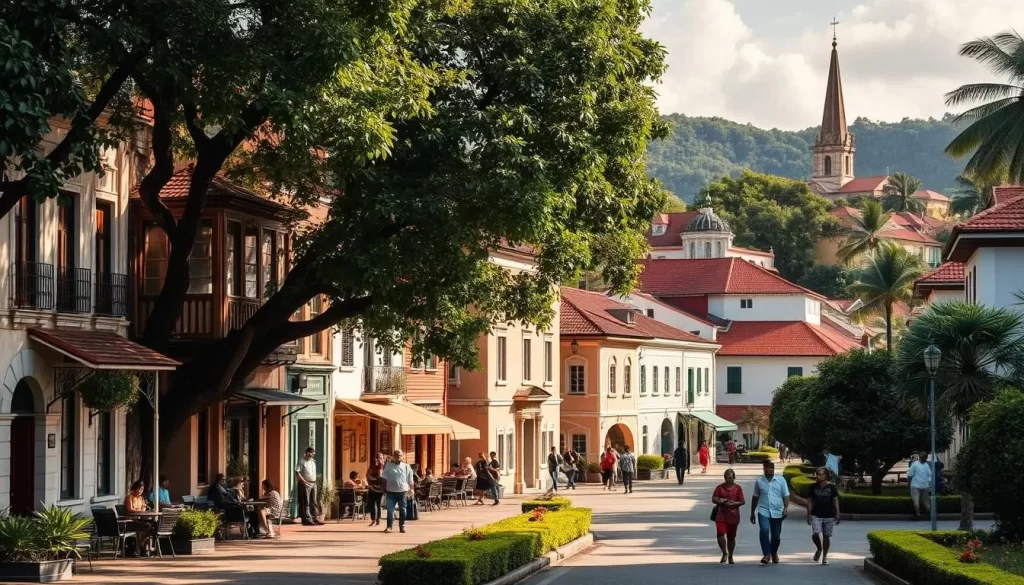
Current Status and Usage of French
Despite the passage of time, French continues to hold an official status in Puducherry, as stipulated by the Treaty of Cession in 1956. Article XXVIII of the treaty states that French shall remain the official language until the elected representatives of the people decide otherwise. You can see the remnants of this legacy in various aspects of life in Puducherry.
- French is spoken by approximately 1% of the population, yet it maintains a significant cultural presence.
- The language is a symbol of the region’s rich historical ancestry and cultural diversity.
- Puducherry’s unique blend of French and Indian cultures is reflected in its architecture, cuisine, and street names.
French Education and Cultural Institutions
The continued promotion of French language and culture is evident through various institutions. The Lycée Français de Pondichéry and Alliance Française play crucial roles in teaching French and fostering cultural exchange.
Some key aspects of French education and cultural institutions include:
- Promoting French language learning among locals and expatriates.
- Organizing cultural events that celebrate French heritage.
- Providing a platform for Indo-French cultural exchange.
This blend of French and Indian influences makes Puducherry a unique union territory in India, where the legacy of French rule continues to be celebrated and preserved.
Regional Languages: Malayalam, Telugu, and Others
You will notice that Puducherry’s geography has played a significant role in creating diverse language zones within the territory. The union territory, comprising non-contiguous regions, has led to a unique linguistic diversity.
Malayalam in Mahe
Malayalam is the predominant language in Mahe, an enclave surrounded by Kerala. It serves as both an official language and the primary means of communication for the local population. The indigenous inhabitants of Mahe predominantly speak Malayalam, reflecting the region’s cultural affinity with Kerala.
Telugu in Yanam
In Yanam, another enclave of Puducherry but located within Andhra Pradesh, Telugu holds significant importance. It is an official language in Yanam and is spoken by the majority of the residents. Telugu, being a prominent language of the Dravidian group, is a vital means of communication among the local inhabitants.
Other Minority Languages
Apart from Malayalam and Telugu, Puducherry is home to several other minority languages. These include Urdu, French, Kannada, Hindi, Gujarati, English, and Marathi. The presence of these languages reflects both historical migrations and contemporary demographic patterns within the territory.
| Language | Region | Significance |
|---|---|---|
| Malayalam | Mahe | Official language and primary means of communication |
| Telugu | Yanam | Official language and widely spoken |
| Urdu | Puducherry | Minority language, spoken by a significant population |
Understanding these regional language distributions helps explain why Puducherry has adopted a multi-language policy. This policy officially recognizes different languages in different districts to accommodate local linguistic needs, fostering a harmonious coexistence of diverse languages within the union territory.
English: The Bridge Language
Puducherry’s unique blend of languages is harmonized by English, which acts as a bridge language across its four geographically separated districts. You will find that English is not just a widely spoken language but also plays a crucial role in the administrative and educational sectors of this Union Territory.
Administrative and Educational Role of English
English serves as an additional official language in Puducherry, used extensively in government administration, legal proceedings, and official documentation alongside regional languages. The territory’s high literacy rate has further entrenched English in the educational sector, with numerous English-medium schools and prestigious institutions like the Jawaharlal Institute of Postgraduate Medical Education & Research (JIPMER) operating primarily in English.
The importance of English is also reflected in the territory’s pursuit of quality education, aimed at equipping students for foreign job opportunities. This has made English a vital tool for the socio-economic development of Puducherry.
English in Tourism and Business
In the tourism and international business sectors, English plays a pivotal role. It is the language that facilitates communication between the local population and international visitors or business partners, thereby contributing to the territory’s economic development. As a popular destination for both domestic and international tourists, Puducherry’s use of English ensures that visitors can navigate and appreciate the territory’s rich cultural heritage without language barriers.
The widespread use of English has thus become an integral part of Puducherry’s identity as a cosmopolitan Union Territory, blending tradition with modernity.
Conclusion: Preserving Linguistic Diversity in Puducherry
You’ve gained insight into Puducherry’s multilingual identity, shaped by its colonial past and regional languages. The union territory boasts a unique linguistic landscape where five official languages coexist within a small geographical area of 483 square kilometers. Puducherry’s approach to language policy offers valuable lessons in balancing historical legacies and contemporary needs.
The territory’s high literacy rate of 86.55% is supported by institutions like Pondicherry University and medical colleges such as JIPMER. As you consider Puducherry’s linguistic future, you’ll recognize that its blend of languages represents a living cultural heritage. Preserving this diversity while promoting integration remains a challenge, but it’s crucial for maintaining the territory’s distinct identity.
The above is subject to change.
Check back often to TRAVEL.COM for the latest travel tips and deals.
